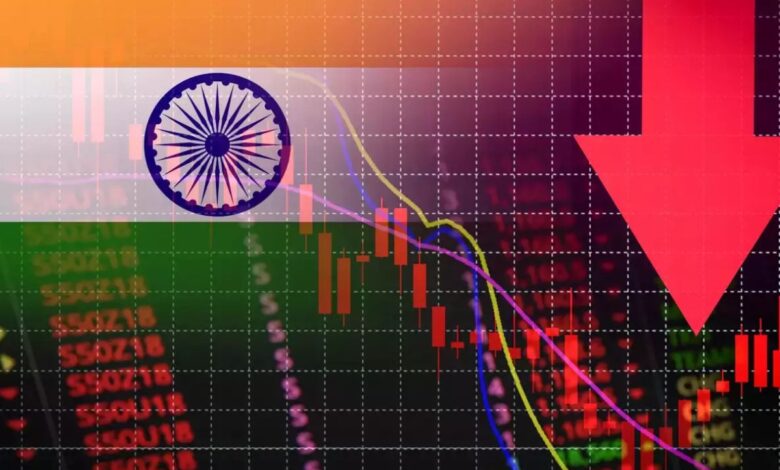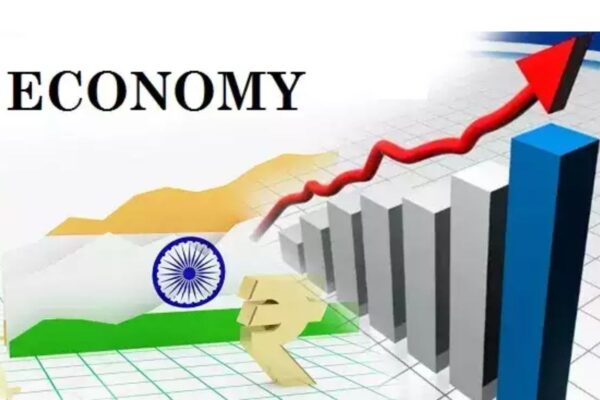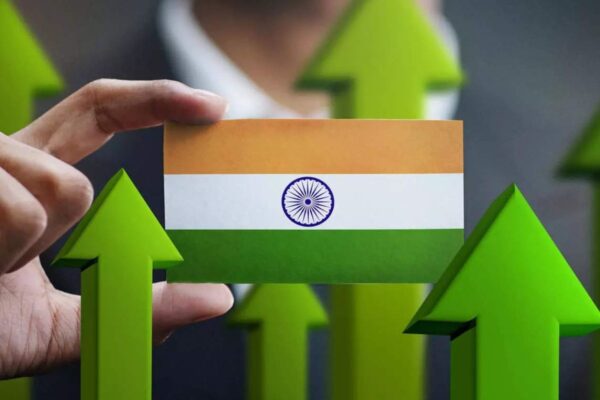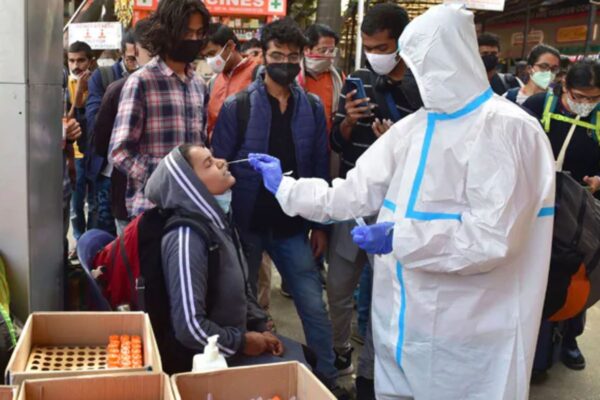Will India be able to handle the dual attack of recession and the fourth covid wave in 2023

Will India be able to handle the dual attack of recession and the fourth covid wave in 2023
Given that there are no immediate effects of the recession or global concerns on domestic demand and investment confidence, India would probably register a 6.8%–7.1% growth over FY22–23.
The seemingly never-ending narrative of economic uncertainty throughout the world, which we extensively covered in our previous outlook, has started to have a detrimental effect on India’s immediate growth drivers. The United Kingdom’s steepest tax cuts since 1972 (but reversed recently) and the US Fed’s 75-basis-point (bp) hike with assurances of more to come have shown little comfort, likely having an impact on the INR and the nation’s current account deficit.
Additionally, China’s growth has slowed and is now below that of the rest of Asia for the first time since 1990. Due to these circumstances, the Reserve Bank of India (RBI) increased the policy rate aggressively by 50 basis points in September, raising it from 4% to 5.9% in just six months.
The current economic climate is so surprising that it is unlikely that a consistent perspective would be displayed if one is looking for assurances from the most recent data releases. With a deeper focus on the drivers of growth, the Recession, currency, and the current account, we attempt to interpret the present facts in this outlook. Although we continue to be optimistic about India’s economy shortly, this prediction is surrounded by a lot of controversies.
Interpreting the most recent data

The most recent GDP figures for Q1 FY2022-23 show that economic growth is moving naturally. Consumer confidence has returned after a protracted slowdown, and expenditure by private consumers increased by 25.9% in Q1.
Even though businesses are reluctant to commit to significant CAPEX spending due to store and price uncertainty, investment has kept up with demand. Nevertheless, the Indian economy was grown by 13.5% in Q1 FY2022-23.1, helped by a robust comeback in demand drivers.
Due to rising consumer confidence, the production side saw a substantial increase of 17.7% in the contact-intensive services sector. The only industry that always managed well throughout the epidemic was agriculture, which continued to thrive. Construction and the “electricity, gas, water supply, and other utility services” industries have experienced rapid expansion.
Manufacturing, which saw subtle growth of 4.5% in Q1, is a sector that has not yet taken off sustainably. The sector’s growth has been hampered by higher input costs, supply disruptions, and labour shortages brought on by reverse migration. The Reserve Bank of India (RBI) data on nonfinancial corporations show that rising raw material costs have put pressure on businesses’ profitability and profit margins. 2
High-frequency statistics give an inconsistent picture of the growth drivers for the foreseeable future.
The immediate growth driver, exports, is slow and is projected to reduce along with the likely global economic recession. Due to the epidemic, government spending—the second driver—is already at a high level. As a result, the government will probably emphasise being prudent in how it allocates its limited resources.
The good news is that capital costs are increasing even as revenue costs are decreasing for the government. For years to come, the multiplier effects of this spending will support growth in income, assets, and employment. Future capital expenditures may be backed by high tax revenues.
According to the purchasing managers’ index (PMI), economic growth persisted in July and August. input price Due to declining commodity prices, such as the reduced costs of aluminium and steel, the recession fell to its lowest point in 2022. This is encouraging for business margins.
Although it varies greatly between industries, power utilisation in the manufacturing sector is now higher than its long-term average, which is encouraging new investment activity in developing capacity.
The boost in credit growth in the business and services sectors suggests that CAPEX investments by enterprises, the third growth driver, have better prospects. The most expected signal for a persistent drive toward investment may be continued demand growth.
The fourth and maybe most crucial growth factor, consumer demand, has dramatically increased recently. However, despite rising consumer confidence, spending growth has not been sustained. For instance, auto registrations have stayed flat while retail sales are growing, albeit at a periodic rate.
We expect that waning pandemic fears and the impending holiday season may present the consumer sector with a much-needed lift.
The story has many moving components, making it difficult to predict how growth drivers will manifest themselves in the upcoming quarters. We expect GDP to retain a good growth momentum, though not as much as we had expected at the start of the year, assuming that the uncertainty-corresponding dust settles over the next several quarters.
We stay cautiously optimistic about growth, which may vary between 6.5% and 7.1% during FY 2022–23 and between 5.5% and 6.1% the following year while keeping in mind the uncertainties in the global economy and a potential recession. Depending on the global economy’s recovery and the economy’s fundamentals, economic activity will probably ramp up quickly in the first few months of 2019.
On the other hand, downside risks are high and might cause a substantial slowdown if they affect the economic fundamentals and prospects. In the part that follows, we describe the difficulties.
Observing the problems

The most important concern is the high Recession, which has lasted far too long and is accompanied by all of its problems. Recessionary conditions harm profitability and margins, raise operating costs, and lower consumer spending power. In other words, a recession hinders supply as well as demand.
A few developed countries are more possible to experience a slump as a result of the central bank’s monetary policy moves in response to the growing recession, which can restrict credit expansion and economic activity.
For most of the year, the total consumer price index (CPI) Recession has been over the RBI target rate range. The recession earlier this year was mostly fueled by rising commodity costs and supply interruptions.
Higher realisations benefited upstream energy businesses, but profitability in most other industries stayed challenging as a result of rising production and transportation costs. This forced producers of consumer goods, cars, and steel to calibrate pricing increases to pass on the increased costs to consumers.
Due to the escalating recession, the government cut excise taxes to lower the cost of essentials like edible oil and other imported raw materials for industries, as well as the price of gasoline and diesel. To solve problems with domestic supplies, it placed export restrictions on several goods.
In the meantime, the RBI swiftly increased its repo rates by 1.9 basis points over five months and implemented the standing deposit structure to absorb the surplus liquidity.
The first quarter’s second half was when commodities prices started to correct. Recently, consumer food prices have been the main cause of the recession, indicating a seasonal effect of regional fluctuations in rainfall on agricultural output.
Rural demand is most negatively impacted by rising food costs in August, and this increase was bigger in rural than in urban areas. This is bad news for the ailing rural economy’s demand, which has been declining.
The growing current account deficit and currency devaluation against the dollar is the other problems. While imports are rising due to the domestic economy’s recovery, exports are slowing due to declining global demand. India’s import costs are rising as a result of the persistent increase of the US currency and the global recession.
The US dollar’s strengthening in response to investors’ flight to safety amid global unrest is more to blame for the INR’s depreciation versus it. It is supporting the euro, pound, and yen, indicating that the Indian economy’s macroeconomic fundamentals are still solid.
However, the RBI was forced to step in to control volatility and ensure the rupee’s smooth movement. The RBI’s action is causing foreign exchange reserves to decrease. Consequently, from a peak of 19 months at the beginning of 2021, the import cover from reserves has decreased to nine months (although, it stays above the benchmark of three months).
Global prices could decrease as economic growth around the world is predicted to slow. By the middle of 2023, a potential slowdown in the price of industrial raw materials and crude oil could lessen the recession.
In the upcoming quarters, industries including consumers, metals, cement, and automobiles are projected to benefit from the declining prices of oil and gas, copper, zinc, and other commodities. Local small-scale manufacturers who have struggled to survive throughout the pandemic and maintain their market share due to increased prices would benefit greatly from the decline in production costs.
If supply grows faster than demand over a sustained period, the economy may overheat and the price decline may be short-lived. The current account may also be a problem despite falling commodity prices because India’s economic trajectory is expected to defy the global slowdown and lead to larger imports than exports.
We hadn’t expected the recovery process to take as long as it has. The forecast is too clouded by too many factors, but as we evaluate the energy crisis in Europe and the slowdown in China over the coming months, we should start to see some clarity. Sustainable growth will depend on the strength of all four economic drivers, while not all four may be operating at full capacity.
Can India combat the fourth COVID wave?

India experienced an increase in daily coronavirus cases on Thursday (December 22, 2022) and registered 185 new infections during the Covid-19 fourth-wave panic. The Union Health Ministry’s data was updated at 8 AM and shows that the number of active Covid-19 cases is at 3,402.
India saw 131 new illnesses on Wednesday while 112 new cases were reported on Tuesday. However, during the last day, there have been six fewer cases added to the active Covid-19 caseload.
The number of Covid-19 cases nationwide has already reached 4,46,76,515. According to the ministry website, the national COVID-19 recovery rate improved to 98.80%, and the active cases make up only 0.01 per cent of all infections.
The data showed that 5,30,681 people had died as a result of Covid-19, with one death reported in Delhi in the past 24 hours.
At 4,41,42,032, the total number of patients who have recovered from the illness has increased, while the case fatality rate has been noted at 1.19 per cent. Although the possibility of an outbreak of the COVID-19 fourth wave in India cannot be completely ruled out, the virus is expected to be less virulent than in the previous wave.
According to Chandrima Shaha, head of the Indian National Science Academy, modelling studies likewise do not forecast any peak (INSA). The first female president of INSA and a former director of the National Immunology in New Delhi is Prof. Chandrima Shaha.
She was in town to participate in the opening of the three-day 88th-anniversary general meeting of INSA, which began on Wednesday and was hosted by the CSIR-National Institute of Oceanography Regional Centre, Visakhapatnam.
The virus dislikes killing its host because doing so puts its existence in danger. It changes and loses some of its virulence. Although it makes its host ill, it does not cause death. Even though the illnesses are severe, this may be the explanation for the recent wave’s low fatality in China, according to Prof. Shaha, who spoke to The Hindu outside of the meeting.
“When compared to Europeans, Indians are more resistant to viruses. The virus’s effects on the lungs and liver are the cause of the “post-COVID problems.” “All vaccines have minute side effects, and it may take roughly a decade to know the adverse effects of COVID-19 vaccines,” she remarked about their side effects.
It is important to recognise that the COVID-19 vaccinations were created in just 15 months, compared to the typical 15 years it takes to develop a vaccine. In India, the vaccine effort was likewise quite effective.
Virus protocols

However, given that we have yet received our vaccinations, can we afford to be lax if a fresh wave breaks out? “The virus is evolving, and while we may be 50% immune to one variation, what about the other variants? For our safety, we should follow pandemic measures like donning masks and avoiding close contact with others.
With 130 billion people, will India ever achieve herd immunity? Although challenging, Prof. Shaha continues, “the success of the vaccine programme shows that we (India) managed the problem quite well.”




